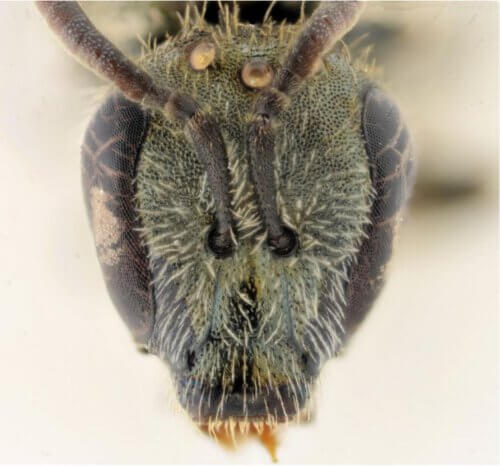In many places in the world there is a significant decrease in the variety and abundance of pollinators, such as bees, when one of the main threats to wild pollinators is the loss and change of habitats
Wild pollinators, wild bees in particular, provide vital pollination services both for agricultural crops and human nutrition, and for the existence of wild plants in ecosystems. However, in many parts of the world there is a significant decrease in the variety and abundance of pollinators, such as bees, when one of the main threats to wild pollinators is the loss and change of habitats. Therefore, restoration of habitats is one of the most important tools in preserving pollinators, and biodiversity in general. In a study carried out by a team of female researchers from the Hebrew University, the effects of the restoration efforts of a rare habitat in the Sharon region are examined. During the research, a species was found, completely by chance A new wild bee previously unknown. The finding was recently published in the scientific journal Belgian Journal of Entomology

In Israel, sandy habitats along the coastal plain have been severely damaged by various development activities, including eucalyptus plantings. The eucalyptus created a living environment that changed the habitat significantly and made it difficult for the wild bees, which are the main pollinators of the wild plants. Several years ago, attempts were made to restore the habitat in the Nahal Alexander National Park by the Nature and Parks Authority, and the ecologist Aviv Avisher, a doctoral student at Tel Aviv University and the Steinhardt Museum of Nature, in which some of the many eucalyptus trees in the area were cut down, in addition to the supplementary treatment of removing the soil layer the upper and sowing of wild plants. In the current study, Prof. Yael Mandlik from the Department of Entomology, Institute of Environmental Sciences, Faculty of Agriculture, Food and Environment of the Hebrew University, together with PhD student Carmit Levy, examined for five years the effects of these restoration attempts on the quality of the habitat for pollinators and the diversity of wild bees in the area.
The researchers used classic tools for surveying insects and plants in the field - they captured insects using nets (butterfly nets), and different types of traps, and made plant sections in which the species of plants, the amount of their blooms and possible nesting sites for bees were recorded. Carmit Levy: "We found that there are many significant changes both in the characteristics of the habitat and the food and nesting resources it provides for the bees, and in the bee society itself. In general, one can be optimistic - one can see a benefit in the state of the wild bee company following the restoration operations and the return of the characteristics of the sandy habitat".
In addition to the optimistic observations, the researchers noted another significant achievement - the discovery of a new species of wild bee that was not known until now, which is probably unique to the sands of the coastal plain in Israel. The new species of bee was identified and defined by taxonomist Dr. Alain Pauli from the Royal Belgian Institute of Natural Sciences in Brussels, who specializes in the identification and definition of bee species. The chosen bee name is Lasioglossum dorchini Named after the Israeli bee researcher Dr. Achik Dorchin from the Steinhardt Museum of Nature at Tel Aviv University. "Beyond the basic importance and the excitement accompanying the identification of new species that we have not yet known," explains Prof. Yael Mandlik, "this discovery is also important in the applied context, in strengthening our ability to study bee societies and generate information that is significant for pollination services and nature conservation."
More of the topic in Hayadan:
